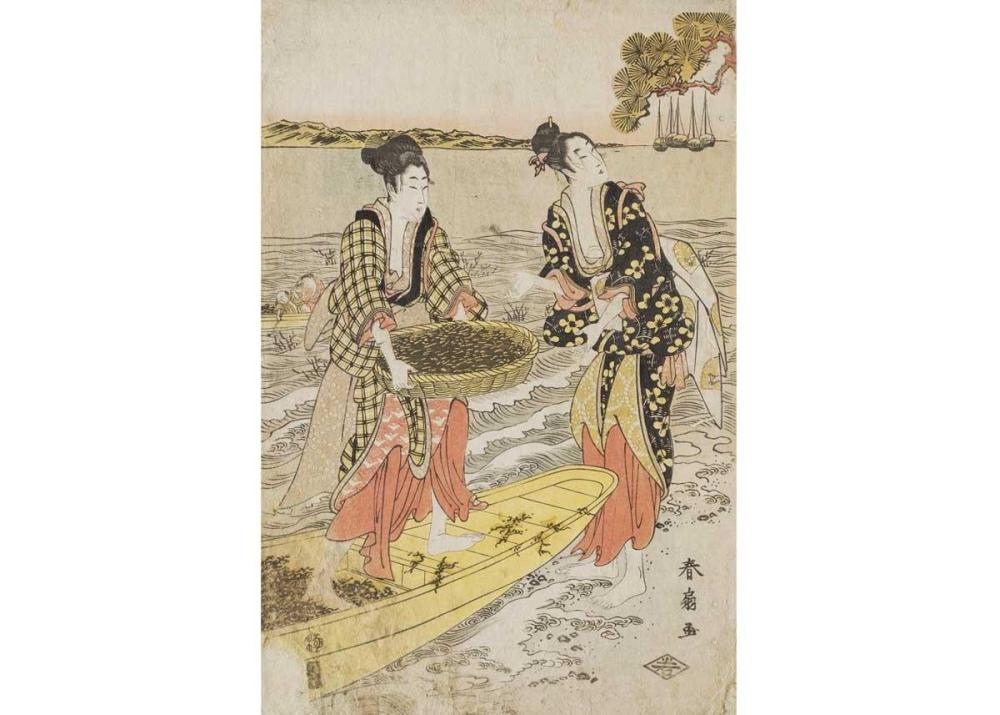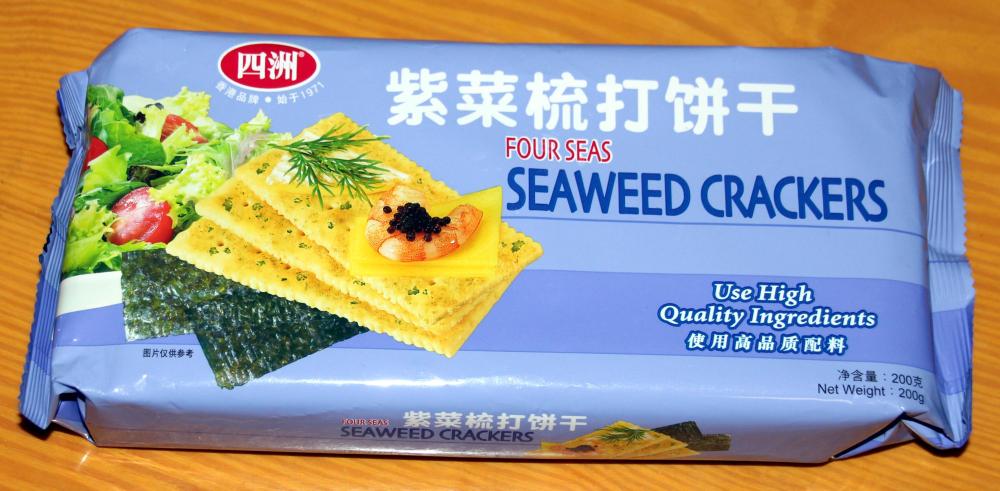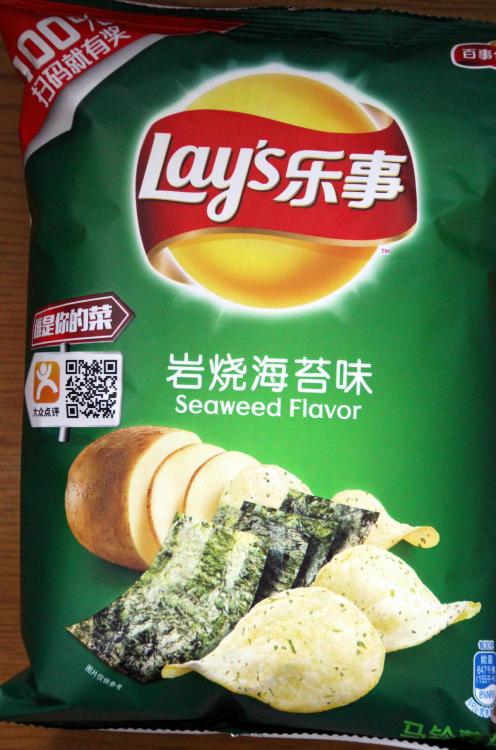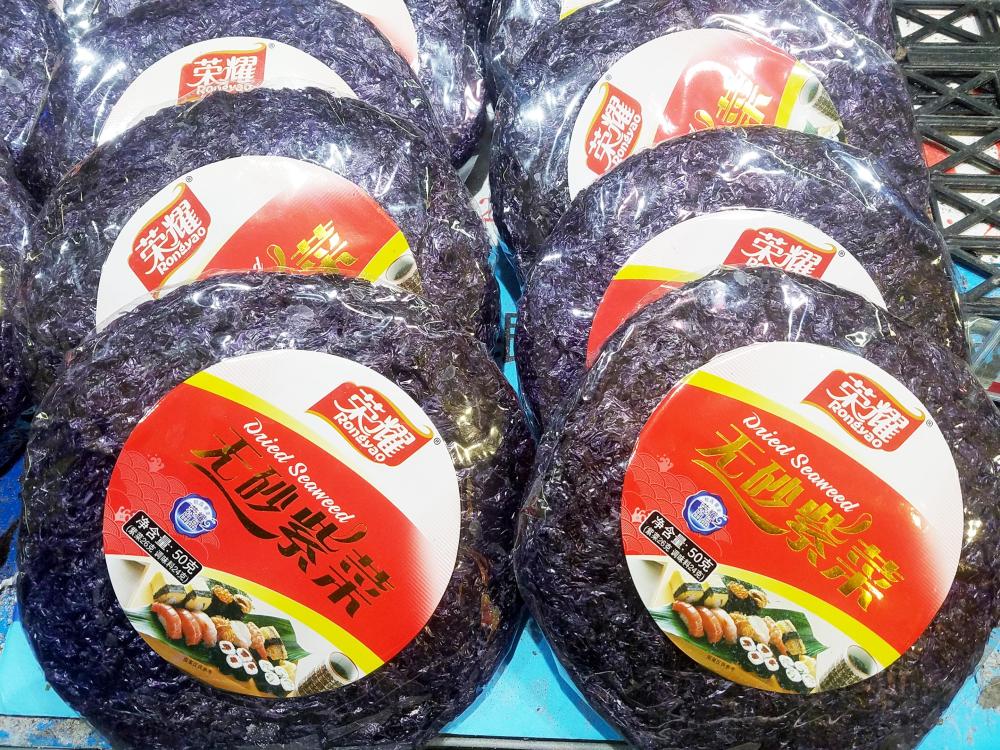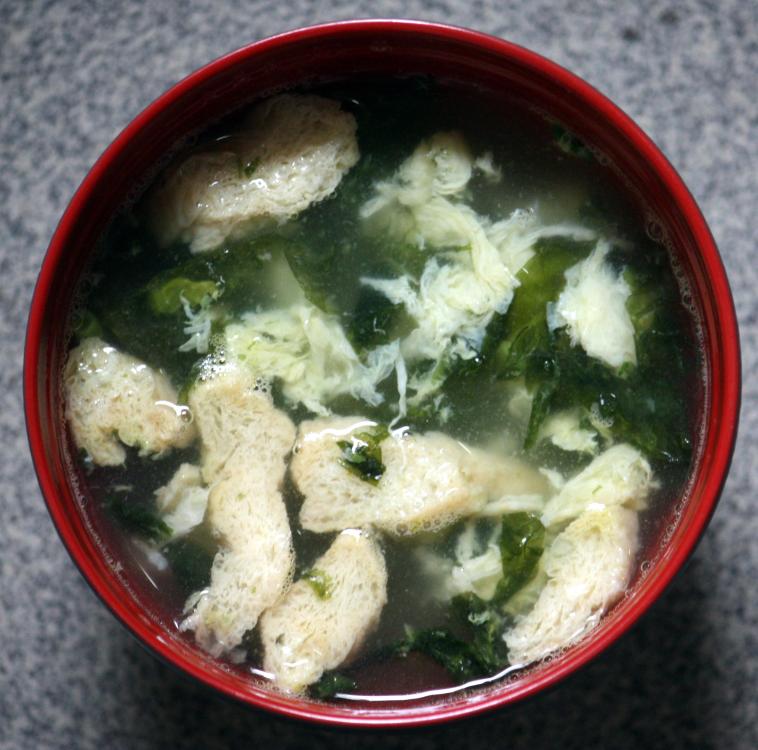Women Gathering Seaweed by Katsukawa Shunko, 18th Century - PD
Of the top three most consumed seaweeds in Japan we come to the third after wakame and konbu, and which is probably also the most well-known in the west. But as we will see, it is not exclusive to Japan or Japanese cuisine.
Nori (Japanese 海苔) originally and historically just meant seaweed but by around the 17th century, by a process linguists call ‘narrowing’ became restricted to members of the Porphyra family. In common usage in Japan it usually refers to P. tenera. In English, it is usually called ‘laver’.
Nori was originally eaten as a paste until, around 1750, it began to be made into sheets using paper making techniques.
The nori industry in Japan was in decline after WWII due to the seaweed being foraged from the wild and to its often being damaged by typhoons and other storms etc. Also, just as importantly there was little understanding of the life cycle of porphrya so there was no successful cultivation of nori farms.
Around the same time and before, Kathleen Mary Drew-Baker, an English scientist from Manchester was studying P. umbilicus, another member of the same family which to this day is gathered in Wales and parts of England as well as Ireland and consumed in the same manner as what we now know as nori.
Her most significant finding was that porphyra requires bivalves and their shells in the initial stages to be able to develop. She also determined that egg shells could be used instead of the bivalves. Her 1949 published paper was picked up by Japanese scientists and by 1952 Fusao Ota and others had developed artificial seeding techniques, which rescued the entire nori industry. Drew-Baker, known in Japan as Kassurine-San, never visited Japan, but she is still honoured there as “Mother of the Sea“. Each year on April 14th there is a Drew Festival in Uto, Kumamoto where there is a shrine to her memory. Every year garlands of nori of that year's crop are placed around the shrine. Whether she ever ate sushi is not recorded!
In the 1960s and 1970s nori became more available in the west due to the hippie-favoured macrobiotic diet and the growth in the popularity of Japanese restaurants.
Nori is, of course, used to wrap sushi rolls and お握り (rice balls) but is also served with noodle soup dishes or toasted and seasoned to be eaten as a snack food. It also flavours other snack foods such as crackers and even Lay's have their use.
Dried Seasoned Nori
In China, nori is known as 紫菜 (zǐ cài), literally ‘purple vegetable’ and is often used in soups. The seaweed and egg soup on your local Chinese restaurant menu often contains this.
It is formed into dried flying-saucer shaped discs and sold in most supermarkets. China also goes down the snack route the same way as Japan.
Chinese seaweed and egg soup
In Korea, the favoured porphyra is P. yezoensis although they use other varieties, too. It is referred to as 김 (gim, kim). They also have popular snacks using 'gim'.
Back in Drew-Baker’s land, P. umbilicalis is gathered around the shores of Welsh, Western English and Irish waters, boiled for hours and made into paste balls which are then coated In oatmeal and fried. The resulting laverbread (sometimes written as lava bread); Welsh: bara lafwr or bara lawr; Irish: sleabhac. This is traditionally eaten for breakfast along with bacon and cockles. It is high in protein, iron and especially iodine.
Laverbread and toast - PD
Dried nori should always be stored in a cool dry place preferably with a dessicant.
This jar contains nori slices and a large box of dessicant at its base.


